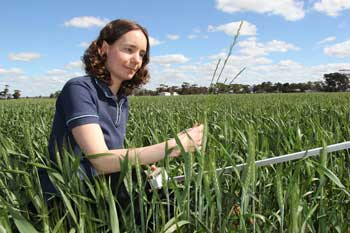Seeding direction can help crops outcompete winter weeds, according to research by the Department of Agriculture and Food.
Department researcher Catherine Borger said trials had shown shading annual ryegrass reduced its growth and seed production.
“Crops and weeds compete for light, particularly during winter,” Dr Borger said. “As demonstrated in five out of six trials carried out at Merredin, Wongan Hills and Katanning, annual ryegrass seed production is reduced when the weed receives less sunlight.
“An east-west crop orientation offers a free and environmentally friendly method of reducing the growth of annual ryegrass.
“Wheat or barley crops sown in an east-west direction, instead of north-south, generate more shade in the inter-row space in crops.”
Dr Borger said with weeds continuing to develop resistance against herbicides, in-crop weed control with grass selective herbicides could be difficult.
“Sowing east-west crops reduces the light available to the annual ryegrass in the inter-row space, which reduced annual ryegrass seed production by an average of 51 per cent,” she said.
“The effectiveness of this technique depends on seasonal conditions, such as how quickly the annual ryegrass germinates, and how tall or competitive the crop is.”
She said the east-west crop orientation may be impractical for farmers whose paddock did not allow east-west sowing, or farmers who do not use auto-steer. In addition, this method does not apply where weeds grow taller than the crop.
This research was conducted by the department in collaboration with the Australian Herbicide Resistance Initiative (AHRI) and funded by the Grains Research and Development Corporation.
The project commenced in 2010 and will conclude in 2015.

Media contact: Jodie Thomson/Lisa Bertram, media liaison +61 (0)8 9368 3937
